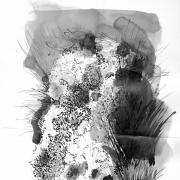He was one of the 20th centuries most important artists who found a new way of expression in the last few years of his life. EWEN MACDONALD looks at why Matisse’s cut-outs, on show this month in Honiton, are so important

There is practically no modernist artist I can think of who produced such ground breaking, incisive and experimental masterpieces so late in their career as Matisse did with his cut-outs, or as the French would have it, papier découpé.
Samuel Beckett with his late prose trilogy; Company, Ill Seen Ill Said and Worstword Ho, I hold in the same kind of regard.
This Hayward Gallery touring exhibition of 35 lithographic reproductions of Matisse’s famous cut-outs is a very important show for the county.
The cut-outs are my own personal favourite artworks of Matisse and I also consider them to be some of the best works of 20th century art.

Adversity can be a good thing for the human soul. When Matisse produced these works he was an invalided old man, estranged from his wife and living a fairly hermetic lifestyle on the Cote D’Azur in Nice.
He could no longer paint in the manner he was accustomed to and so he began to create his art using the everyday materials of paper and scissors. The kind of implements found in any infant classroom.
I’ve always marvelled at the simplicity, elegance and effectiveness of Matisse’s mark making. Marks, that were present early in his career, such as the elliptical cauldron of figures in La Danse, right up to later works, as in the minimal, but still very engaging figures, which inhabit the Stations of the Cross scenes, Virgin and Child and St Dominic in the Dominican Chapelle du Rosaire de Vence.
The one thing that Matisse is perhaps most famous for is as a colourist (there are few proponents of colour working since the latter half of the 20th Century who haven’t been greatly influenced by Matisse).

This master of colour makes no exception with the cut-outs. The gouache paints with which he covered the paper are positively overflowing with iridescent power. In modernist terms it would be difficult to find a more radiant blue than the ultramarines of his famous nude cut-outs. Only Yves Klein, who based his entire oeuvre on the colour blue, comes close.
Form is another of the brilliant innovations of these pieces. Matisse had always challenged our perceptions of form, but with his cut-outs he brings his skill, age and wisdom to the outer reaches of the interplay between the narrative and the purely abstract.
Not bad for a man who on first viewing Picasso’s Les Demoiselles d’Avignon found the painting to be a hoax and a monstrous abomination against the modern art movement. Even though that painting has been viewed by some scholars as Picasso’s repost to Matisse’s own work and more specifically his 1906 painting Le bonheur de vivre.
So great is Matisse’s technical mastery of form in his papier découpé that I once personally used his work The Snail as a primary source of inspiration for a poetry pavilion I was designing for an assignment in architecture school, much to the bemusement and befuddlement of my tutors, I might add.
The cut-outs he produced are truly the work of a great artist who lifted his game to its absolute apogee in his winter years.
It may well be the measure of the greatness of any work of art that it has wide appeal to both saints and sinners, aesthetes and philistines, intellectuals and dilettantes and boors and bores alike.
That each individual feels an affinity with the work, whatever their predilections may be and their attachment to the piece may be based on their own sense of vanity, illumination or salvation. Matisse’s cut-outs can certainly meet the measure of all these.
So wherever you reside in Devon, or Manchester or The Shetland Isles for that matter, get along to this exhibition and don’t miss out on the opportunity to see these lithographic reproductions of some of the greatest artworks in the modern western canon. n
‘Matisse-Drawing with Scissors’
(Touring Exhibition from the Hayward Gallery, Southbank)
10 January-7 February 2015
Elmfield House, Dowell Street,
Honiton EX14 1LX



























